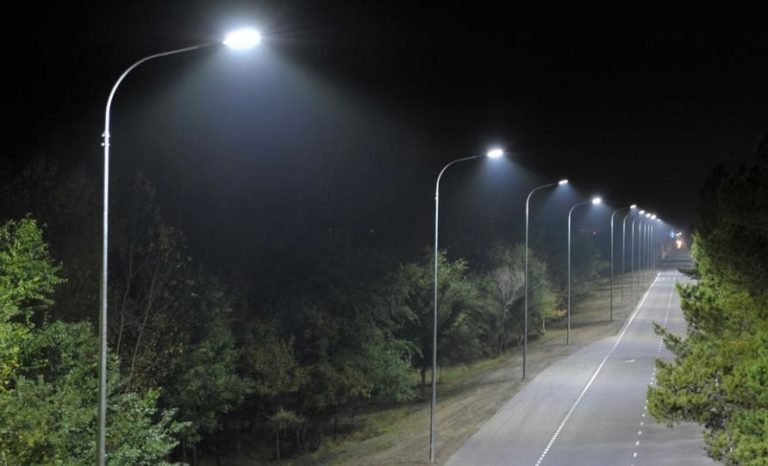What should be the distance between lampposts
The distance between lighting poles is selected according to strictly established standards GOST and SNIP. To determine the exact figure, you need to consider a number of factors, so it is worth breaking them down to understand how calculations are made. On the correct location depends on the illumination of the road and road safety.
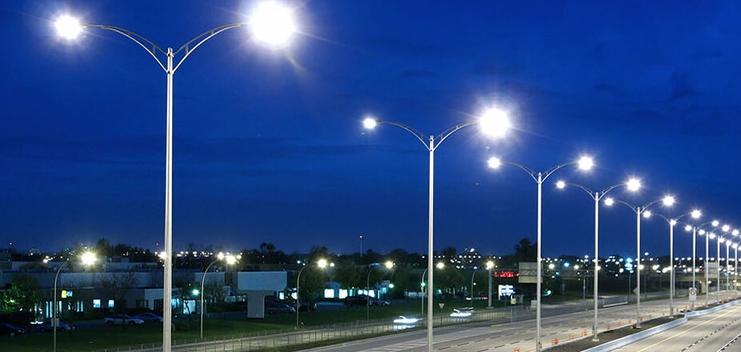
General features of determining the distance on the highway and in the city
The distance from one pole to another is called the span. It varies depending on a number of conditions, so there are no clear norms that can be guided everywhere. The first thing to consider is the following:
- Which area is illuminated. It can be a highway with different traffic volumes, city streets of different widths, or park areas. The standards for each type are different.
- The type of poles and their height. Here it is important not only the distance from the lamp to the ground, but also the number of lamps on the pole, their location relative to the roadway, etc.
- Type of light sources and the characteristics of the lamps used. Very often after replacing the lamp the illuminance changes if a variant with different characteristics was used. This is why calculations are always made for specific equipment, so that failed lamps can be replaced with the same ones.
- Location of the poles in relation to the areas to be illuminated. Here it is important to comply with the norms, as you can not put the poles too close, and if you move them far away, the quality of light will decrease.
- Terrain and other features that can affect illumination. For example, on descents and ascents need to place lights so that no part was left without light and at the same time the light flux did not strike the eyes.
- Pole layout. This directly affects the illumination of the roadway
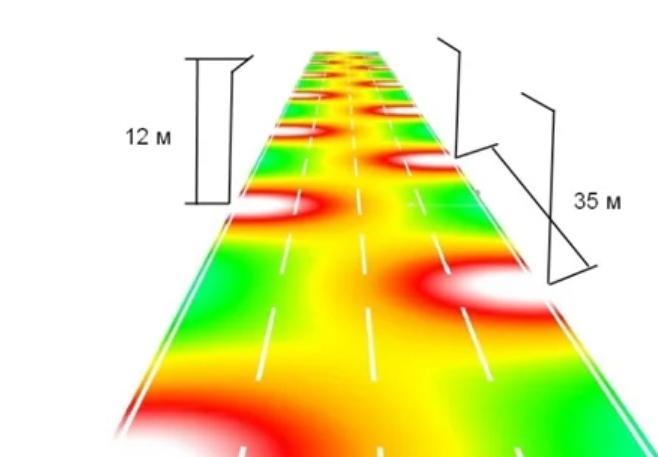
You can improve the lighting by replacing the lamps with more powerful or the use of plafonds with more efficient options.
Norms according to GOST and SNiP
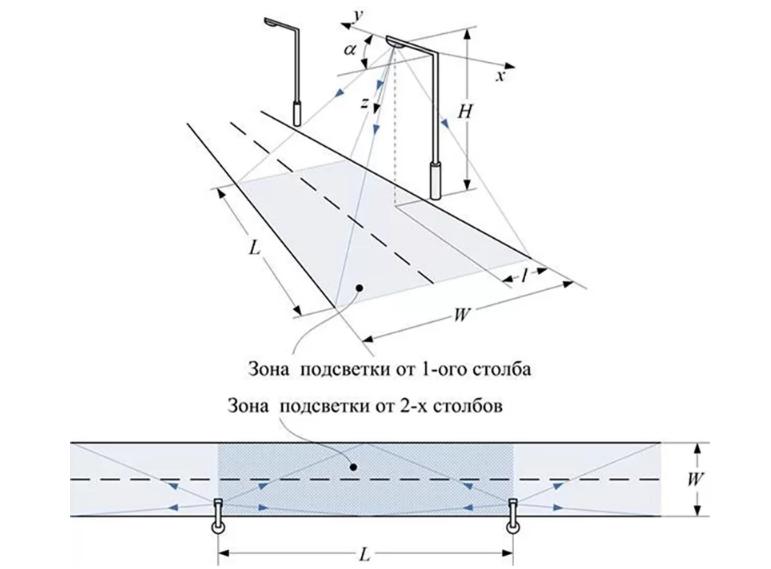
Building codes allow you to accurately determine all the parameters in order to choose the right location of lighting. In addition, there are a number of other aspects to consider. They are shown in the diagram for clarity:
- Height of location of the lighting fixture above the roadway. The higher this figure is, the wider the light spot, but the lower the light intensity. Typically the height marked with the letter H, it is chosen for a particular road, the average value is 9-12 meters.
- Span width. The standard is determined based on the type of road, its category of lighting and traffic congestion of the route. It can range from 30 to 65 meters, so the correct calculation depends on how many posts will have to be installed in a particular area. The width in the diagrams is marked with the letter L.
- The position of the lighting fixture Relative to the roadway. To improve performance and provide illumination of the road rather than the curb, the luminaire is usually brought out with appropriately sized brackets. They can be included in the design or they can be fixed separately at the top. This figure is denoted by the letter I.
- The width of the driveway - another important factor on which to start when determining the placement of lighting fixtures along the road. If the figure up to 12 meters, you can put the lights on one side, if the 12 to 18, it is best to have them on both sides of the road in staggered order. For carriageways with a width of 18 to 32 meters, a rectangular staggered arrangement is used. The index is denoted by the symbol W.
- The angle of inclination of the plafond with respect to the roadway must also be chosen individually, since this depends on how the light flux will be distributed. It is marked with the symbol α and measured in degrees. By changing the angle, you can accurately set the light and adjust it if necessary.
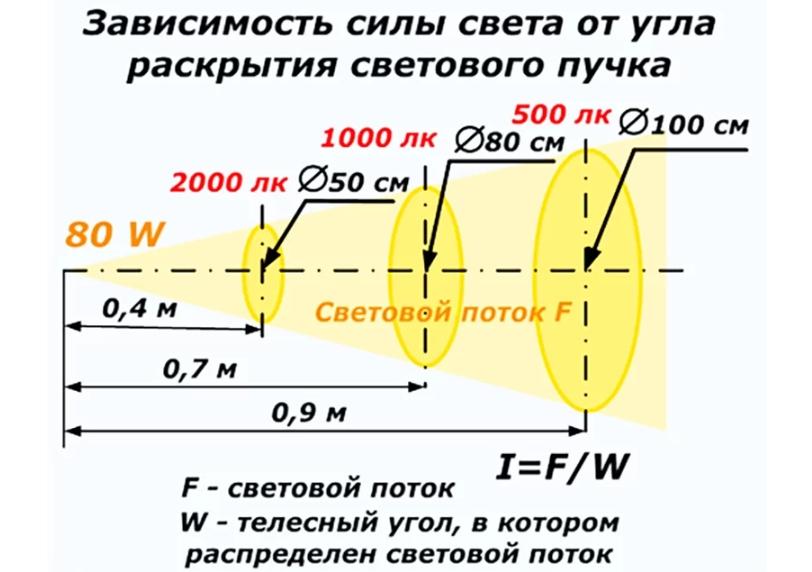
When determining the distance between the lights, the intersection of the cones of light of neighboring lights is taken into account first. It is in these areas measure the level of light and check it for compliance with the standards. Since it is the most poorly lit parts of the roadway, they are taken into account by the regulatory authorities. Below is a table of indicators for luminaires with sodium lamps, one of the most popular today.

The main factors in determining lamppost spacing are
Requirements for road lighting are prescribed in GOST R 54305-2011 (paragraph 4.1). The main indicator that affects the definition of distance and other important points is the horizontal brightness. And it depends on the illuminance category of the object:
- Category A - are highways and major city streets. Values depend on the intensity of traffic on the road, if it is more than 3000 vehicles per hour, the average horizontal light must be at least 20 lux per square meter. With an intensity of 1,000 to 3,000 the rate is the same - 20 lux, and if the hour passes from 500 to 1,000 cars, then focus on the figure of 15 units.
- Category B - Regional main roads and the objects equated to them. If the intensity of traffic exceeds 2000 per hour, the norm of horizontal illumination is 15 lux. It is also used when the average passage of 1,000 to 2,000 vehicles. When loading up to 1,000 vehicles up to 1,000, the index must be 10 lux.
- Category B. - Local streets and roads in cities, the most numerous group. If the density of traffic is more than 500 vehicles, the norm is 6 lux. For carriageways with up to 500 cars per hour or much less a horizontal illumination of 4 lux is enough.

The distance between the lampposts located on one side of the road, in proportion to their height is 5:1. If a staggered arrangement is used, the proportion increases to 7:1.
Pillar material
Used poles should be selected according to the norms of GOST 32947-2014. When choosing, the seismic features of the region, the minimum temperatures in the winter period are taken into account. The impact of aggressive environments should not be overlooked.
Metal poles
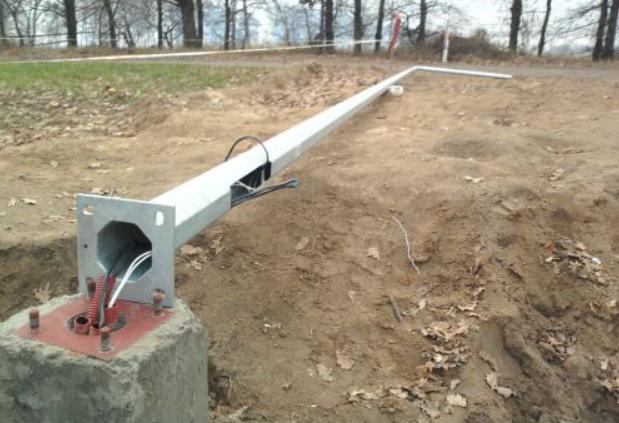
Steel is used for this variant. Suitable only for regions where winter frosts do not exceed -40 degrees. Supports made of metal have such features:
- Most often two or 3 elements are connected by welding. But for a small height, there may also be one-piece supports that are installed by a crane.
- Metal poles can be used only for lighting, in which case they are called non-power poles. If the structure is used to install wires and serves as a power line, the poles are called power poles.
- In terms of section, the profile can be round or multi-faceted. In some models, the thickness of the pole is the same throughout the height, and in some models it is reduced, giving it a conical shape.
- According to the method of installation, there are straight and flanged types. The first is installed in the traditional way, digging a hole of desired depth and concreting the base. The flange type is more convenient due to the fact that the base is poured in advance and a mounting flange is placed in it. It is necessary to install the post so that the holes coincide with the studs and tighten the nuts.
Metal is strong, but badly damaged by corrosion, so for the posts use anti-corrosion paint, the coating is renewed every few years as it wears.
Concrete poles
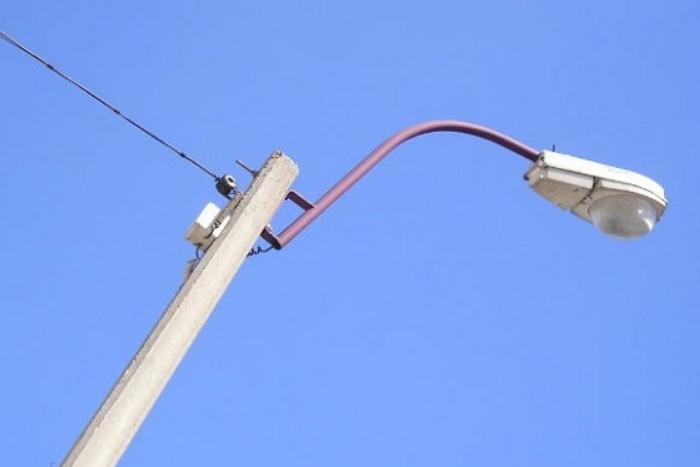
The most common solution, as it has a long life and requires little maintenance during use. The surface does not need to be cleaned of rust and paint. The features are as follows:
- Vibrating equipment is used for production, which compacts the concrete of high grade, so that no air bubbles remain inside. For reliability, a framework of welded reinforcement is inserted inside.
- Structures can be used in regions with temperatures down to -55 degrees. They are suitable for almost all areas, because they can withstand seismic shocks of up to 7 points.
- Resistance to icing and strong winds in reinforced concrete is also an order of magnitude higher than in metal poles.
- They can be different in form: pyramidal, round, conical, prismatic. Each option is designed for certain conditions, so it is necessary to select according to the requirements for lighting.
- Installation methods are the same as for metal supports. You can concreted the lower part in the ground, and you can use the flange method of attachment. In terms of weight, this option is much heavier, so you need the appropriate equipment for its installation.
Concrete supports can be used for fixing wires. In the private sector and on streets with low traffic, this option is most often used.
Poles made of composite materials
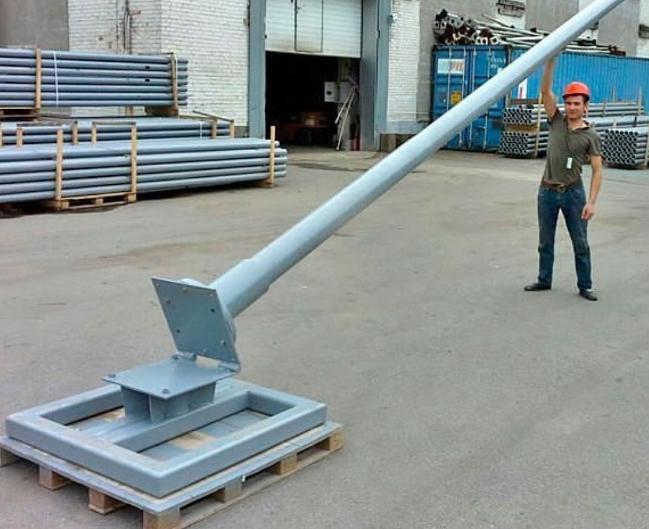
A modern solution that is used more and more every year. It differs from traditional poles, but it has many advantages:
- They are made of polymer resins or other compositions. Products are reinforced with fiberglass to give rigidity and provide the desired shape.
- Pillars are much lighter than concrete and metal ones, which simplifies transportation and installation. At the same time they have a long service life - dozens of years and do not require protection from corrosion and updating of the protective coating.
- Profile and sizes can be different. All products are certified, there must be documentation of compliance.
- Supports are suitable for both lanterns and wires, so they can also be power.
- Attachment is most often made by the flange method. But there are options that can be concreted in the ground.
The distance between street lights is not the only criterion for their installation. You must also consider several requirements for the location of the poles. This determines where best to route the cable and what kind of distance of the lamp from the pole should be used. Remember the following restrictions:
- From the pole to the curb should be at least a meter if the light is an expressway or a city highway with a lot of traffic. This is the minimum figure, it can be done more, but it can not be reduced. The same applies to the rest of the standards.
- On most city streets, the minimum distance from the curb is 50 cm. This applies to secondary roads and other low-volume traffic options.
- If trucks are not allowed on the roadway, the minimum distance should be 30 cm. This option is used where there is no risk of damage to the supports by large vehicles.
- When lights are installed on the dividing line, its width should not be less than 5 meters. At the same time on each pole usually have two lamps on each side.
- For parks, residential areas and recreational facilities, the distance and location of poles are chosen individually. There are no strict rules, it should be based on safety considerations, so the poles do not create a nuisance.
- If there is no curb at the edge of the roadway, the minimum distance to the post should be 1.75 meters.
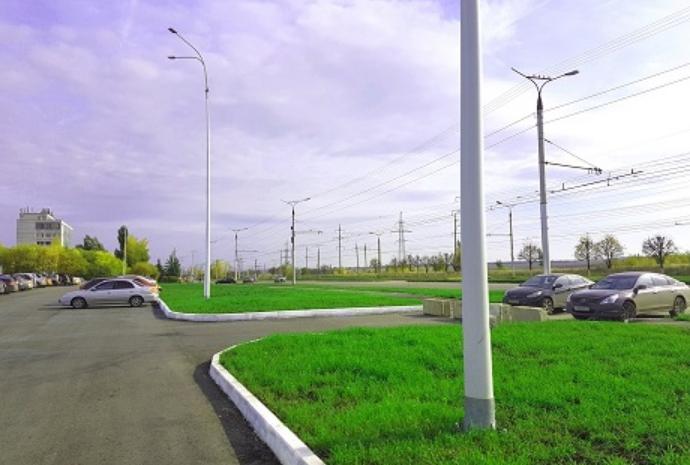
If the posts are installed in residential areas, then from the post to the balconies or windows should be at least 1 meter. And better to make the distance even greater to eliminate any danger.
When installing poles, a number of criteria must be considered to ensure good visibility and create a safe system. The main indicator is the surface illumination, so the distance between the poles, their location, the height of the lamp and its power are chosen so that the system meets the standards.
